We designed a creative approach to transform the intangible brilliance of Clarabridge’s software into a tangible experience for target audiences. It was something they could see, and seemingly touch and feel, to carry that message throughout the website and convey the value it could bring to every brand’s customer engagement.
Creating a successful digital web design can mean the difference between growing your customers and losing them on your website doorstep. For Clarabridge, which delivers a better customer relationship platform for its clients by leveraging artificial intelligence to sort through complex data, providing clarity with its website was critical. It turned to Bluetext to unify its various website platforms into a single customer experience.
Clarabridge’s challenge was fairly straightforward: Its clients’ own customers constantly provide feedback through a wide range of information channels, from direct contact to social media and everything in between. Yet, that same explosion of these channels and the sheer volume of data creates significant challenges on how to make sense of it all. Telling that story on Claribridge’s digital platforms had been confusing. It needed a better way to tell its story.
To address the digital web design, Bluetext used digital storytelling, brand extension, a sophisticated user experience, and aggressive search engine optimization to deliver a new website that does what Clarabridge promises for its customers – turning complexity into clarity. You can view the website live here.
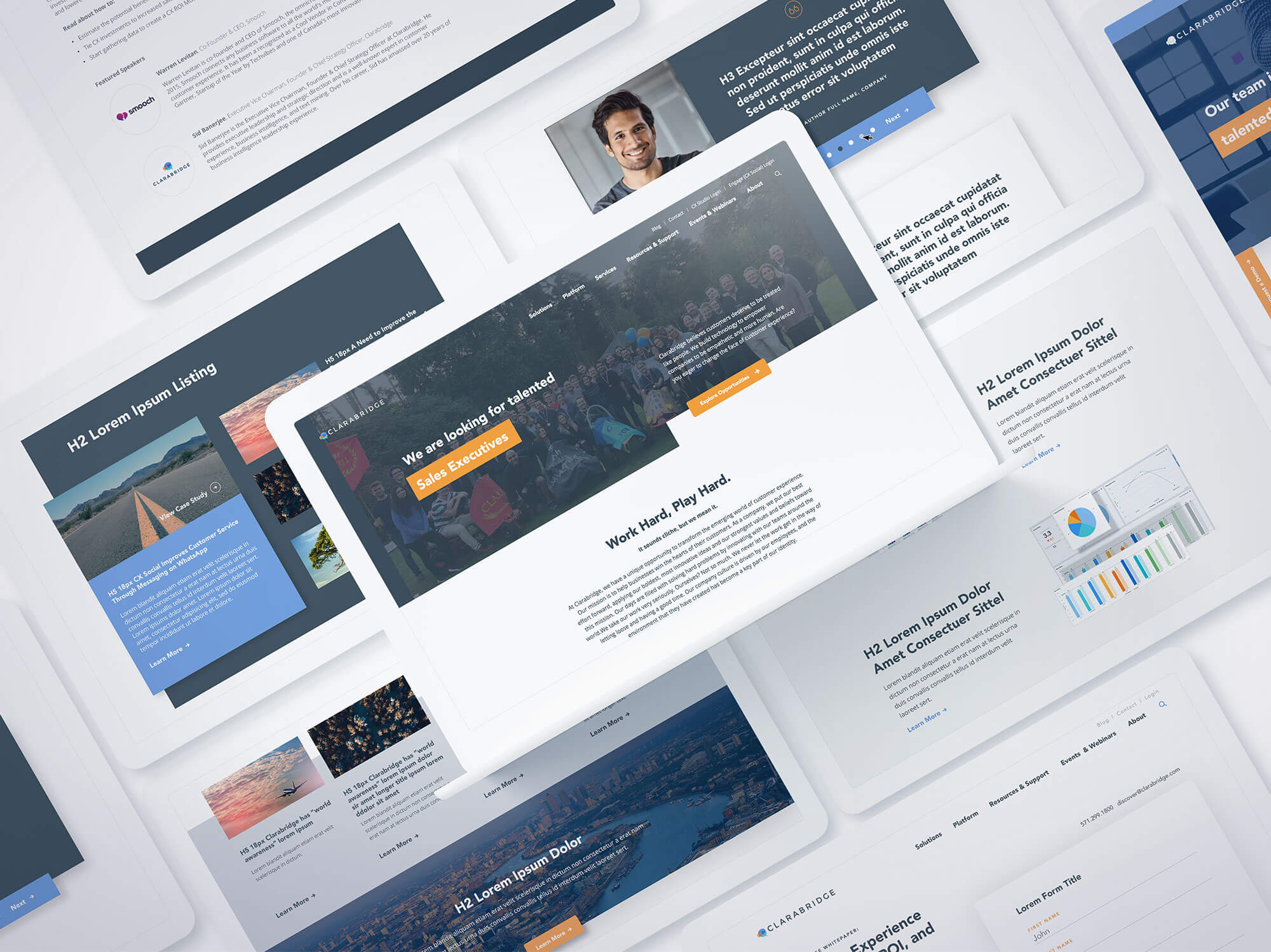
The digital website design begins at the top of the home page, with an engaging animation that represents the massive amounts of customer data and feedback flooding into their clients’ systems. Flowing down the page, moving through a funnel that sorts and selects the right information at the right time, the graphic turns the data into actionable snippets of intelligence that can be fed to executives, product managers, contact center teams, and frontline staff to better serve their customers.
The creative style of the digital web design pushes the boundaries to enable Clarabridge to stand out in a crowded industry, while the linear path of the video animation delivers the product messaging in a creative way that gets attention while taking audiences through the sales funnel. To see the design in action, visit our Bluetext Hall of Fame.
“Bluetext should be at the top of your list if you are in the market for a redesign.”
We’ll let our client speak for the project results:
“When we started our journey to build a next-generation digital platform we challenged BlueText to create a unique, engaging user experience that tells the Clarabridge story in an impactful way. Bluetext knocked it out of the park! It created a modern site design that breaks through the clutter in our crowded industry; an A/B homepage that greets new visitors with a video narrative providing a concise understanding of what Clarabridge does while recurring visitors receive a streamlined, mobile-optimized view of the site.
Beyond that, the custom backend CMS is beyond easy to understand, creating significant efficiencies for the Clarabridge team. Lastly, where they truly excelled and what I will miss most, is working with such a top-notch team of experts. Their customer service and ‘deep in the trenches’ support during the project was critical. This was hands down the smoothest site launch I have participated in. BlueText should be at the top of your list if you are in the market for a redesign.”
Carrie Marty Carroll
Vice President, Design (Brand.UI.UX)
Clarabridge
Learn how Bluetext can help with your digital web design for an amazing customer experience.
The Bluetext Blog has been focusing on website design for the best user experience. In this post, we are examining five trends that companies need to understand as they examine the performance of their website design and whether it is delivering a successful user experience that is delivering results for the brand.
Cards are Taking Over. Card first became popular in consumer-focused social sharing sites such as Pinterest and Facebook for placing clusters of information – including text, photos, and links relating to one topic – in one place. For 2018, they are already gaining in popularity and offer a visually appealing way to organize and display larger data content in a smaller space. Cards also allow visitors to quickly assess the category of information and decide immediately whether they want to click on it or not. They are easy to manage and companies can select different arrangements and sizes to emphasize some types of content over others. Because of this obvious advantage, particularly on a smaller screen, cards are moving into the mainstream across all platforms.
Don’t neglect the touch. Mobile devices are physical objects that hit a number of our senses, most prominently sight and sound. But the feel is also important, and shouldn’t be neglected. Because of the small size of the screen, giving haptic feedback can be important and enhance the small-screen experience. Adding in well-tuned clicks as the viewer advances through a screen or a list of items also improves engagement. This is particularly true for sliders and similar types of horizontal navigation that takes viewers away from the downward scroll.
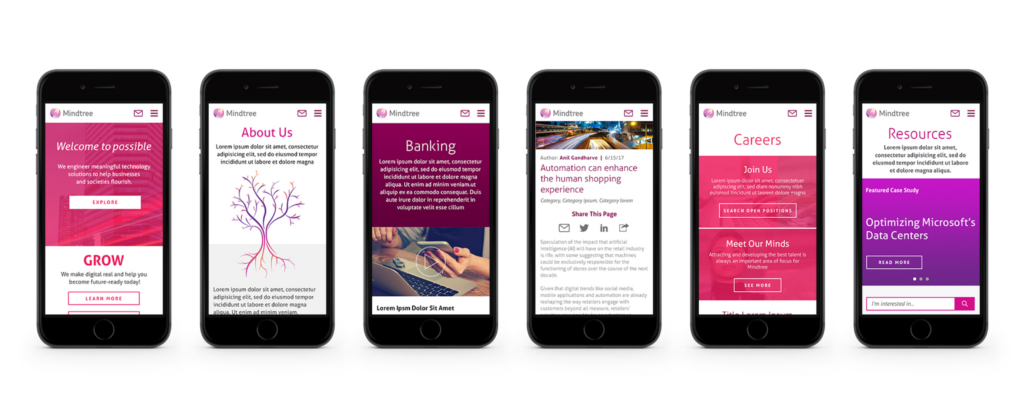
The sound and the fury. Some designers feel like sound should be an afterthought, and many find the auto-play functions that are so popular across Facebook and other social meid platforms more annoying than helpful. But when done right, sound layers will enhance the web design user experience on mobile devices. Subtle but pleasant sound layers can signal when a visitor is on the right page and can reinforce the buyer’s journey through the site. They can also add to the experience when a comment is placed, or even an emoji selected.
Video is replacing static images. We all know the appeal of video for communicating information about the brand and its products or services. As video and streaming capabilities continue to get more robust, and as screens themselves better display high-res video, it is quickly supplanting static images on mobile devices. It also better engages customers – after all, video clips are always visually more appealing than static images.
Colors and borderless display. As mobile screens, now including the Apple iPhone X, are moving their screens to be completely borderless, maximizing that display field is essential. To do that, vibrant colors are making a comeback. It was not too long ago that the trend was for muted and pale color combinations to accommodate the flat designs of mobile devices. Not only do more vibrant colors attract user attention, when used in combination with the borderless display, they allow website design to literally go outside the lines for a better user experience.
WordPress and Drupal have been the leading open-source content management systems for the past 8+ years. During this time, both platforms have created strong reputations for themselves.
WordPress has been viewed as a user-friendly content management platform, built for bloggers who need to get their information out quickly and easily without having to worry about learning how to code. This made the barrier to entry onto the platform extremely small, resulting in the landscape we have today with more than 25 percent of all websites built in WordPress.
Drupal comes from the other side of the spectrum, designed for developers as a developers platform. With this developer-first mentality, Drupal offers many more features than WordPress to provide flexibility, scale-ability, and maintainability. While the learning curve for Drupal is significantly higher than that of WordPress – reducing the adoption rate by non-technical users – this did make Drupal stand out in the enterprise by catering to larger applications with a more robust set of requirements. Yet, in the meantime, it acquired a reputation as a developers CMS that’s not as friendly for general users.
Drupal 8 changes the game for Drupal and highlights several core strategic initiatives to help break down the barriers and remove the developer-first stigma that the platform has acquired over the years. In this blog post, we will take a look at some of these core initiatives.
Fast-forward to today, with Drupal 8 in its prime
Drupal 8 opens up a new world for users. This is backed up by the fact that 5 out of 7 active strategic core initiatives for Drupal 8 relate to improving the content management experience. The goals of these initiatives are simple:
- Reduce the barriers of entry for non-technical users (Out-of-the-Box#, Outside-In#)
- Provide site builders with the tools they need without having to write code (Out-of-the-Box#, Layout#)
- Provide content managers the tools they need to be successful (Workflow#, Media#, Outside-In#)
Out-of-the-Box# Out-of-the-Box# is a strategic core initiative for Drupal 8 which focuses on improving Drupal 8’s OOTB capabilities to provide a fully-featured CMS. Phase 1 of this initiative is to provide a fully baked example site into a core destination website for Food Network Magazine. The example will provide a rich and beautiful experience for users as they navigate through the website.
This example profile will also provide a framework for other developers to do the same thing and begin creating pre-packaged site templates, similar to what WordPress does, as a way of providing a near-plug-and-play experience.
Outside-In# The Outside-In initiative is one which strives to improve the in-line editing experience in Drupal 8. With today’s landscape of website building platforms, it only makes sense for Drupal to push for this. A key benefit to this type of editing experience is that it keeps content managers in-context of the work they are doing. Content managers are coming to expect these types of slick editing interfaces which are offered by other CMS platforms and website builders such as WordPress, WIX, and Shopify.
Drupal 8 now ships with basic inline-editing experiences across its core features. The foundation is available and the “contrib” space is catching up. Many of the “contrib” add-ons support the in-line editing experience, while Drupal is adding more every day.
Layout# The Layout initiative is one which is focused more on the site-builders and power-users. The goal for layouts is to provide cookie-cutter like shells where users can drag and drop content and blocks to meet their content needs.
Workflow# The Workflow initiative is focused on improving the workflow, preview and staging capabilities for content in Drupal. Every organization has slightly different requirements when it comes to publishing content to the web. The Workflow initiative helps to strengthen the core functionality of Drupal to allow for these varied requirements by providing configurable workflows on a per-content-type basis.
Content staging is extremely important to large organizations. Being able to preview a new version of a page before publishing is significant.
Media# Drupal 8 has long struggled with reusable media assets. The objective of Phase 1 of the media initiative is to provide a simple media solution to make Drupal 8 easy to use for basic use cases. There is a focus on strengthening this feature and integrating it into the core components of Image Fields & WYSIWYG.
While Drupal 8 may not set the highest bar for a great content management experience, it is making significant strides to catch up to its competitors. This combined with the areas at which Drupal already excels, including Performance, Security, and Maintainability, make it an obvious choice for enterprise-level CMS implementations.
Looking to see how you can transform the way you manage your website? See how Bluetext can help!
B2B website design that focuses on the user experience will continue to be a top priority for brands who thought UX was only for consumer and e-commerce sites. In a recent blog post, we offered some of the best practices for developing an effective user experience on a business-oriented website. In this post, we will explore some additional best practices for the B2B website design that puts the user first in its architecture.
Write the way your targets think. When potential buyers visit your website, they will have a level of knowledge that most often is not as deep as you. Write content for who they think and eliminate jargon or text that won’t keep their attention. Use language, phrases, and concepts that are more likely to be familiar to them.
Make sure the text you include on your site appears in a logical order, but it should be natural as well. Confer with key customers and ask them to describe what your solution, services or products mean to them. What problems do they solve, and what were their pain points before working with you?
Let the buyer maintain control. Eliminate designs that override how a prospect might want to interact with the website. Autoplay videos, which have become ubiquitous across social media platforms and many news websites, can frustrate visitors who view these are a nuisance.
Don’t assume what the visitors want to do; let them play the video only if they want to. It should supplement, not be a substitution for, good content that is in text on the page.
Automatic carousels, once a common feature on many high-end websites, have also lost their allure, for the simple reason that they don’t work. Besides the fact that motion in carousels is distracting and rarely timed at the right intervals, it doesn’t present key messages to the visitor where they will be certain to see all of them. Layer information for your website in a way that makes it easy for your buyers to discover and explore instead of using an element that is less effective.
See how Bluetext can help your brand deliver an effective user experience.
User experience and personalization was the top trend for website development, and it will continue to be for 2018. Designing and executing the best architecture for a website engagement and conversion, while offering the right content at the right time to improve SEO and move prospects through the sales funnel, needs to be every marketing executive’s top priority. It remains a process of emotional transformation for many organizations, as top executives push still need to be convinced that creative design alone isn’t going to make their website the business tool that it needs to be.
With that in mind, here are our top tips for creating websites with user design as the first and foremost priority:
- Personas are evolving. It’s easy to look at personas as a type of user who fits into certain common demographic categories. In the political arena, for example, a typical persona might be the “soccer mom,” shorthand for suburban mothers in the 30-45 age range whose main concerns are focused on their children. That makes sense for political purposes, but it gives little insight into how people actually engage with a website. We are recommending grouping personas into categories according to what they want to do on the site. Is it browsing, comparison shopping, or looking for specific content in order to make a decision. Recognizing these groupings offers more useful insights about what they want from their experience, and how best to deliver that content when they want it.
- Less is more. It’s easy to clutter up a website with tons of promo boxes and fly-out menus. But the goal is to make it easy for visitors to find what they are looking for and take the actions that we want them to take. Instead, design the home and landing pages to reduce the tasks required of users to the bare minimum. Make it simple, and get rid of all the clutter that doesn’t add value or that serves as a distraction.
- Design the user experience. Remember that designers are always working on large monitors with the best resolution. Unfortunately, most users are on laptops, tablets or mobile devices. User design for that reality shouldn’t be an afterthought. Visual hierarchy, spacing, content grouping, positioning, and size should be solved in the wireframe process before a visual designer is passed the assignment.
- Take a field trip. There’s an old adage in real estate that says the more houses a homebuyer visits, the more likely they are to know the one they want when they see it. That’s why one of the early steps in our design process is an extensive virtual field trip to explore design elements in scores of websites across multiple industries. The idea is to show the client team the wide range of user designs that are out there on the web and to react to the design elements and functionality in multiple settings. We watch their faces closely during this exercise to see what they respond to, and to give them the confidence of knowing it when they see it.
- It’s all about the user. It’s easy to gravitate to what you like for the website based on your own preferences. But it’s not about you, it’s about your customer and the user experience. While tempting to select design elements with your own preferences and tastes in mind, that won’t help engage your target audiences if they have a whole different set of preferences and needs. Always remember that it’s about what users want to do. Our job is to help them to get the content and take the actions they want in the easiest and most intuitive way possible.
See how Bluetext can help design a website with a great user experience.
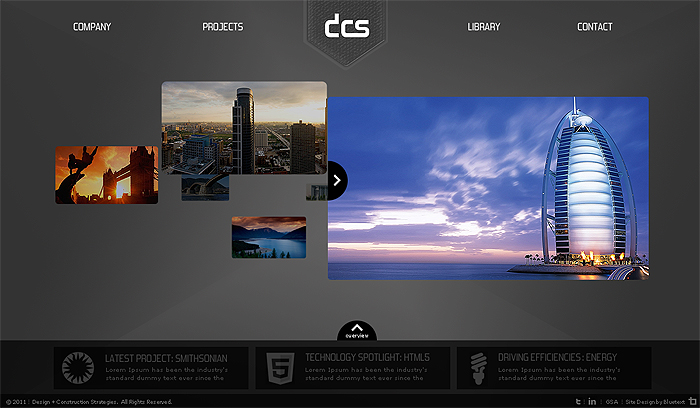
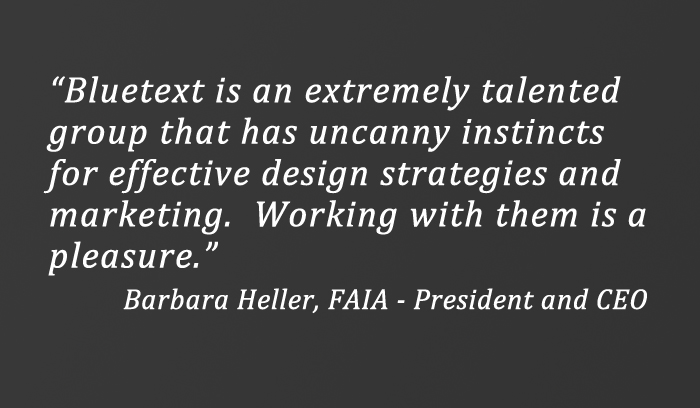

Smart digital media strategies depend on deep, accurate and relevant personas. Getting personas accurate and relevant in terms of website user experience, search media, and social media are critical. Mistakes in this persona development process lead to flawed content strategies, search in bound link targeting, and unusable web experiences. Correcting these personas after strategy deployment leads to budget over runs and dissatisfied brand embracers. Smart digital consultants use processes to reduce the risks inherent in persona development and the deliverables that are driven out from these personas.
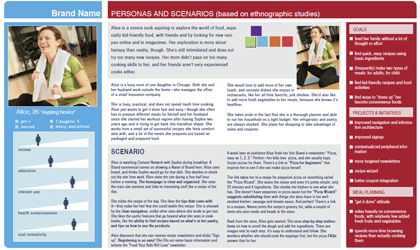
Typical persona deliverables should include:
- Portraits of each persona delivered as compelling summary graphics and slides.
- A behavioral model of each persona, comprised of how the persona thinks and reacts to site concepts.
Conventional persona development begins with qualitative research usually through focus groups and interviews, both virtually and in person. The process begins with analytical research, based on a large enough sample of your actual site visitors. Depending on the business and industry the word “large” obviously means different things. Leveraging clickstream data and the associated demographics, attitudes, and visit metrics, you can validate what your personas dictate. We therefore know definitively:
- Web property visitors
- Motivators for why they come
- The various persona attitudes they arrive
- The linear tasks they hope and seek to accomplish
- How successful these experiences are (review abandon pathways, shopping carts, applications, etc)
- How they feel about your digital presence and your brand
- How the site experience influences their likelihood of doing business with your brand in the future
Because we identify the primary personas from this statistically robust sample of thousands of actual visitors, the likelihood of our missing a key persona or even a key attribute is far lower than would be the case with exercises that start with focus groups.
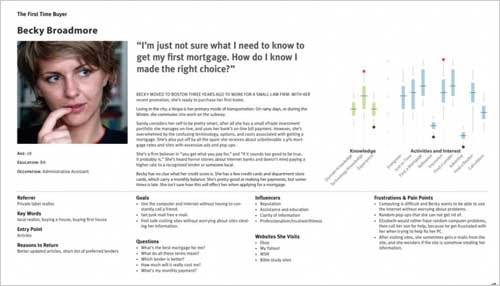
Only when we have a clear picture of current visitors do we move to focus groups and one-on-one interviews, where we dig into the needs and experiences that formed your visitors’ attitudes towards your space, your brand, your products or services, and your competitors. We know, for each persona, the underlying motivators that influence the way they see your site and what they need from it, both now and in the future.
Get in touch if you would like help building out your personas to inform a sound digital media strategy.

Trend #2 – User Experience Design Becomes More Humanized
As marketers strive for the strongest brand recall in their competitive marketplaces, they must still focus on what our data continues to show – leveraging as many human sensors in a branded experience as possible drives results. The more human sensors involved in a customer experience the higher the brand recall, resulting in stronger campaign key performance indicators and the most positive word of mouth brand marketing you can get – viral. The following trends in humanizing branded online user experiences will continue to emerge in 2011:
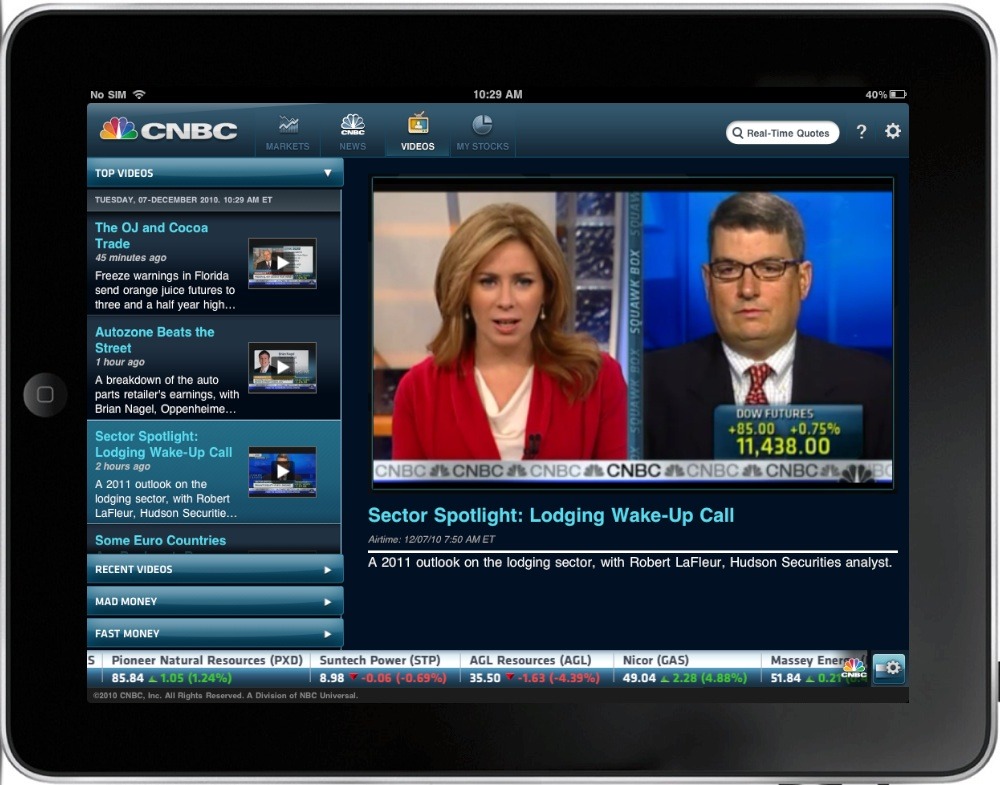
Touch – This year, brands will focus increasingly more on the touch experience. Touch allows the user to engage with another sense, thus offering higher brand recall. As tablets becomes ubiquitous, another experience will need to be considered in how we produce the interactive arts. Another dimension to the style sheet will emerge as standard in all projects to allow for presentations to be optimized if they have touch or a no-touch capability. Mice are much more precise than fingers, so interfaces will become dynamic to create optimized interfaces for the various devices. The human race is proving that there is a 4th screen needed in life. Wall mounted, the workbench, the casual experience and the mobile experience. I find myself equating my laptop to the modern day workbench, while the tablet is more like a casual device. iPhone and Android phones need to fit in the pocket. Until technology produces a mass market stretchable product, there will be two product categories. Printing and the disposable goods industry will shrink as people go all digital. The tablet is speeding that industry contraction. Printing in an analog way makes no sense with today’s technology. I am seeing consulting firms far and wide with high volumes of presentations switching to synchronized iPads in presentations versus printing. Clients prefer the progressive, cleaner, portable experience. Branding these experiences and producing applications for this customer behavior is a great opportunity to differentiate your brand.
CNBC iPad Application
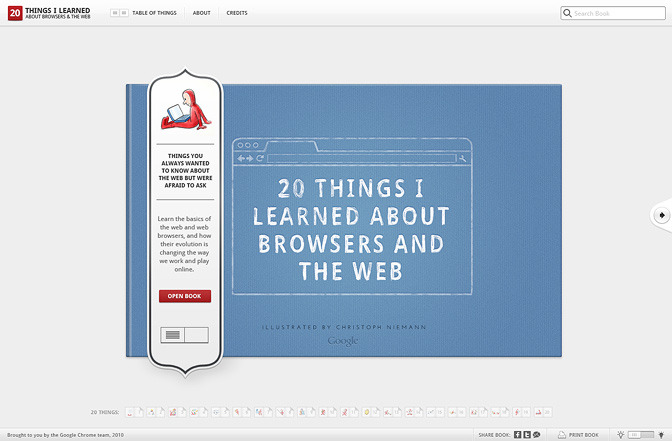
Social Media Integration – Understanding how your social ecosystem is engaging with brands is critical in today’s socially connected world. A sound social strategy that creatively weaves into a brand experience is where you will see all brands, including public sector, business to consumer, and business to business audiences. These platforms are communities in themslves. Brands like Facebook, YouTube, Twitter, LinkedIn, Vimeo will all be integrated into a user experience.
Live Customer Service – The time to react to your customer is shrinking. Customer service has become the new marketing. Look at how Rackspace and Zappos and other customer service centric brands are growing. These are very different industries, both branding themselves with Ritz Carlton quality customer experiences. The “social support” experience grows. Brand get rated online through outlets like Yelp, Service Magic, etc. These ratings are search optimization pillars and facilitate many more word of mouth conversations between companies and their brand ambassadors. Encouraging social support produces a strong knowledge base and a self service community that drives support costs down and brand engagement up.
HTML5 – The standard will continue to grow as browsers become modernized globally. Brands and customers will demand HTML5 experiences for their richness, openness, and accessibility across all devices seamlessly. As differentiation between Flash, Silverlight, and HTML5 blur dramatically HTML5 will rule. What is Adobe’s next move? Open source Flash all the way? I think this is the year. Adobe’s sales will continue to grow as their tools continue to be best in class.
Mobile – Mobile and Facebook global growth continues to trend inline with one another. 2011 will bring 600 million global smart phones online. A more connected world is a more sophisticated world with greater demands and a changing dynamic. Mobile technology solutions like Square, PayPal, Identity X and other brands and their API developer strategies will enable brands to produce some amazing applications for their customers.
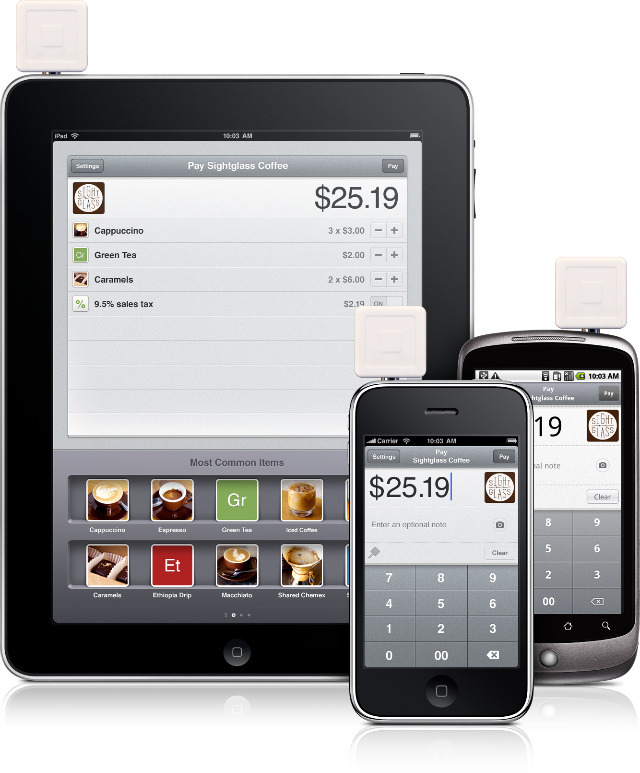
Design digitally becomes more humanized. Years of two dimensional experiences with limited colors, limited fonts, and limited bandwidth and accessibility are now all things of the past. The amazing experiences agencies globally are producing for their clients are truly phenomenal.
